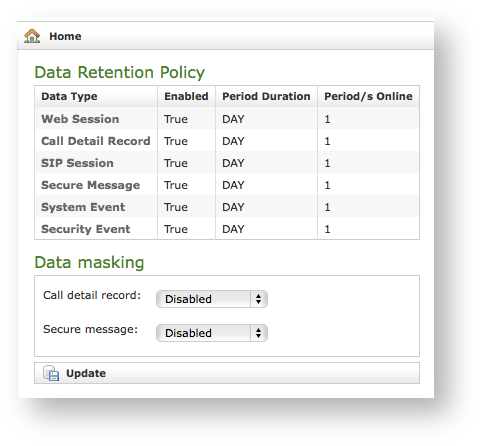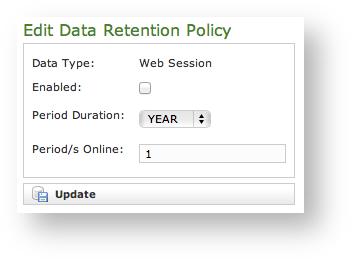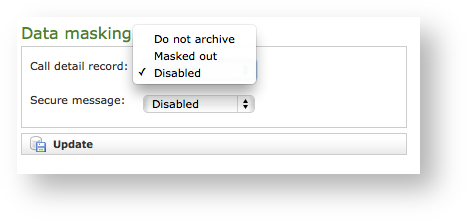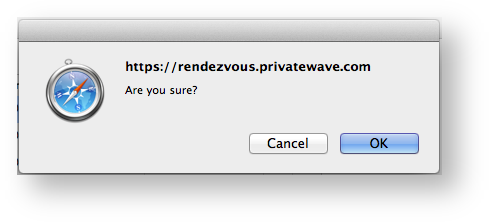1. Privacy Settings
Present section was formerly known as "Data Retention" and has been updated and renamed because of deep improvements in PrivateServer Data Management.
Privacy Settings are EVSS feature about archiving and storing policies for some historical data.
You can access Privacy Settings and its counterpart Archived Data by menu entries shown in figure 1. Menu access to the Data Retention under "SERVER CONFIGURATION".
The first one is used to configure the Retention features, the latter for retrieving the information stored on the hard disk of PrivateServer.
1.1. Setup of Privacy Settings: Data Retention Policy
Data Retention Policy is about keeping historical data on disk, removing them from data storage and eventually dispose them as per your timetable. You can configure retention policies for all historical data managed by the appliance, which are listed in figure 2. Data Retention Policy list. In the same list you can also read if retention is Enabled, how many data have to be collected (Period Duration) and how many archives are going to be kept as downloadable archives (Period/s Online).
The data involved in the process are deleted from internal database and exported on local file system for archival.
If you need to understand the data stored in each Data Type, please refer to the logging section of the present manual.
By clicking on each row's Data Type you can access to specific Policy form that let's you edit Data Retention behaviour.
Such form is shown as an example in figure 3. Data Retention Policy editor. Using the mentioned form you can:
- enable the Data Retention(Enabled checkbox)
- select the period to be kept on-line (Period Duration)
- choose how many archives you want to keep online (Period/s Online)
1.2. Setup of Privacy Settings: Data Masking
Three options are available for logs about Calls and Secure Messages:
- Do not archive. PrivateServer won't keep trace of any record at all. Exception is for enqueued Secure Messages still not delivered which are shown as masked records and deleted as soon as delivered.
- Masked out. Mask all sensitive data by switching them to "XXX". You just get time and duration of calls and trace of message delivery but you cannot tell who's who for both sender and receiver or caller a callee.
- Disabled. No Data Masking and thus apply Data Retention Policies showing data.
Data Masking changes type of data that are going to be stored (if you chose to store them at all).
2. Retrieve the Data Archives
The "Data Archive List" is shown in the page body (see figure 5. Data Archive List). Each archive row shows its Name, its Creation Timestamp and its Size (all the columns are pretty self explaining).
The last two columns shows two icons: the first one is for downloading the archive, the second one is for deleting it.
It's possible to download the archive also by clicking on its name
2.1. Data Archives and Secure Messaging
You can just download a CSV view of Secure Message transport data, such as sender, recipient, acceptance date, delivery status.
Secure Messages payload is never saved. As soon as Message has been delivered, its payload (aka Message content) is deleted from PrivateServer's data storage
3. Delete Data Archives
If you choose to delete the archive, press the last column icon.
A confirmation is requested (see figure 6. The confirmation pop-up window). If you approve the action then the archive is removed from both the list and the hard disk of the appliance.
Point of no return action!
Please be aware that this action isn't undoable! Once confirmed the deletion, the archive is lost forever!
4. System's logs
In addition to historical data collected in internal database, the two main PrivateServer's components can log debug information in log files.
They main components are:
- Secure Voip Engine
- Web Console
Both of them use default system locations (specifically directory /var/log) to store their logs. PrivateServer saves only the last week of these files and rotates them on a daily base. Rotate operation implies both deletion for files oder than one week and archiving in .zip format for the most recent ones. All the log files are labelled by timestamp of the rotation.





